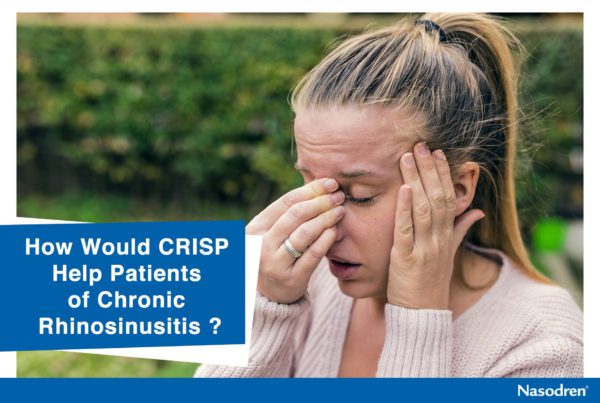PHYTOTHERAPY
Non-pharmacological sinusitis treatment
In the treatment of rhinosinusitis, we can use several plants that can be used both for preventive purposes and in the actual treatment, whether this be internal or topical.
Decongestive nasal plants: these reduce the excessive or abnormal accumulation of blood in the sinusoidal vessels
- Mint (Mentha piperita) :
- Eucalyptus (Eucaliptus globulus)
- Eyebright (Euphrasia officinalis)
Mucolytic plants: these act by liquefying and fluidising the mucus, rendering elimination easier.
- Anise (Pimpinella anisum)
- Mint (Mentha piperita)
- Eucalyptus (Eucaliptus globulus)
- Mallow (Malva silvestris)
Antiseptic plants: these are capable of reducing the propagation of infectious agents
- Purple coneflower (Echinacea purpurea)
- Mint (Mentha piperita)
- Eucalyptus (Eucaliptus globulus)
- Thyme (Thymus vulgaris)
- Pine buds (Pynus silvestris)
- Rosemary (Rosmarinus officinalis)
- Propolis
Immunostimulant plants: these stimulate the phagocytic power of macrophages, increasing the number of white blood cells
- Purple coneflower (Echinacea purpurea)
- Propolis
Mint
- The active part of the plant is the fresh or dried leaves. The essential oils (menthol (38-48%), menthone (20-30%), cineole (5-6%), and flavonoids (12%) are extracted from the leaves and are used for inhalation. Despite the fact the plant does not have any noteworthy toxicity, essential oils should be dosed with caution due to their central nervous system (CNS) toxicity.
- It must be remembered that this essential oil cannot be used in children under the age of three, pregnant women or adults with asthmatic bronchitis or asthma.
- The topical pharmaceutical forms may cause allergic dermatitis.
Eucalyptus
- The active part of the plant is comprised of leaves rich in essential oils (up to 80% eucalyptol). In addition to the leaves, the essential oils and liquid and dry extracts are also used in clinical practice. The most common dosage form is wet inhalations. The role of water vapour is very important, since it has been demonstrated that to achieve a quantifiable volume of secretion in the respiratory tract, the inspired air must have more than 80% humidity and be hot.
- Essential oil is also contraindicated in pregnant and breast-feeding women as well as children under the age of 2, as it may cause bronchospasms.
- Topical pharmaceutical forms may cause allergic dermatitis.
Eyebright
- The active element is the aerial part of the plant. It is rich in glycosides of iridoids, essential oils, tannins (7%), choline and flavonoids.
- Internal administration is falling into disuse due to its toxicity.
- It is contraindicated at high doses in hypertensive patients, people with glaucoma and women in pregnancy or who are breast-feeding.
Anise
- The active parts of the plant are the dried fruits. These are rich in essential oils (transanethol [93-95%]), coumarins, flavonic glycosides and mucilages. The essential oil is contraindicated during pregnancy and breast-feeding as well as during oestrogen treatments due to the possible synergistic action.
- At high doses, anethole is neurotoxic with convulsant and narcotic action which can also lead to muscular paralysis and coma.
- It may cause contact dermatitis in topical use.
Mallow
- The active part is in the flowers. It contains mucilages, flavonoids, and phenolic acids. Although the leaves are rich in mucilages and flavonoids, they are not used often due to their intense mucilaginous flavour. They are used in infusions.
Purple coneflower
- Both the roots and the aerial parts of different species are used in therapy. The posology depends on the species and the part of the plant which is used. It consists of essential oils, phenolic acids and heteroxides and may be administered in the form of tablets, capsules, infusions, decoctions, liquid extracts, dyes, etc.
- The plant is considered non-toxic when taken orally, but the presence of alkaloid renders its use advisable in a period of less than 8 weeks.
- No adverse effects are known, but it is not recommended in children under the age of 12, pregnant or breast-feeding women or people with autoimmune diseases or on immunosuppressives, corticosteroids or cytostatics.
- Concomitant use with alcohol or hepatotoxic drugs may boost the toxicity of the coneflower in prolonged treatments.
Thyme
- The element used is the flowering part. It contains essential oils (thymol and carvacrol), polyphenol compounds (borneol and linalool), flavonoids and tannins.
- Essential oils cannot be used during pregnancy and breast-feeding. In aromatherapy, the essential oil may boost the potential toxic action of other essential oils.
- The oil is neurotoxic and dermocaustic.
- Its most common use is in infusions.
Pine buds
- The parts used are the red buds and young shoots. The composition is based on bitter principles, organic acids, lignans and oleoresins.
- The essential oil is contraindicated in children under 6 years old, as it may trigger bronchospasms.
- The excessive inhalation of essential oil may cause nervous excitation and an increase in blood pressure.
Rosemary
- The active element is the flowering parts. These contain essential oils (α-pinene [25%]), terpenic derivatives and polyphenols.
- It cannot be used in epileptics, pregnant or breast-feeding women or children under 3 years old because it is neurotoxic, epileptogenic and abortive.
- It may be found in infusions, liquid extracts or, preferably, in essence.
Propolis
- This is an apiculture product which the bees collect from the resins and secretions that cover the buds of different vegetable species. It contains flavonoids, waxes, resins, phenolic acids, essential oils and mineral salts.
- The most common pharmaceutical forms are capsules, tablets, bottles, drops and sprays.
- In general, propolis is harmless, but it may cause dryness of mouth, drowsiness, dizziness and problems in the epigastrium.
- It can be used in children as long as the dosage is adjusted according to age.







